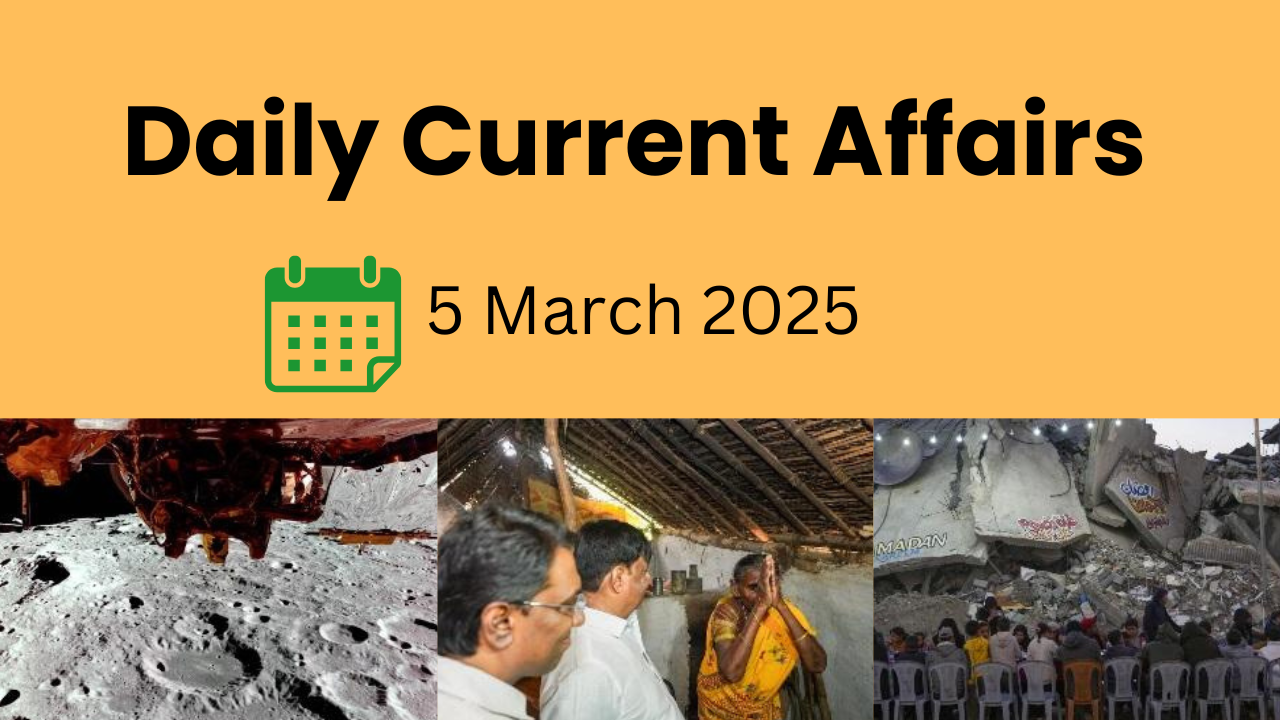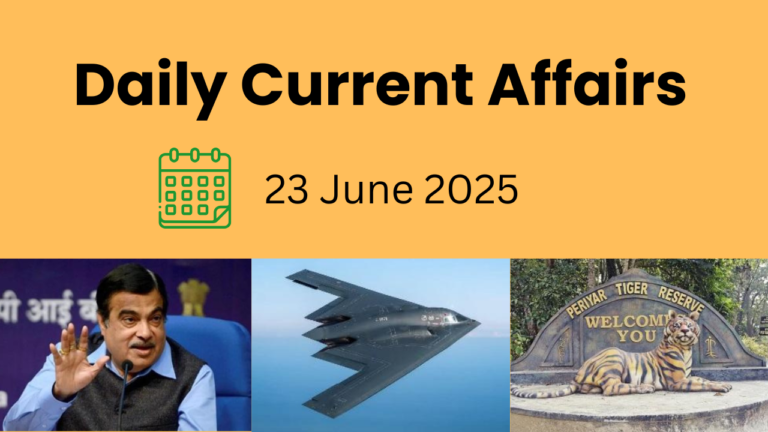1. Election Commission Addresses Concerns Over Duplicate Voter ID Numbers
Context: The Election Commission of India (ECI) has acknowledged concerns regarding the issuance of identical Electors Photo Identification Card (EPIC) numbers to voters across different states. This issue has raised fears of bogus voting and electoral fraud in the country.
Understanding the Issue:
Before the introduction of ERONET, different states used independent voter registration systems. This led to duplicate voter entries, especially due to migration. To tackle this, the ECI is actively working to rectify duplicate EPIC numbers and is set to implement ERONET 2.0 for enhanced voter database management.
What is an EPIC Number?
The Electors Photo Identification Card (EPIC) is a 10-digit alphanumeric voter ID number issued by the ECI.
Purpose of EPIC:
- Serves as proof of identity for Indian citizens aged 18 and above.
- Provides access to electoral services, such as voter status checks, information updates, and new applications.
- Helps prevent fraudulent voting and ensures electoral integrity.
What is ERONET?
ERONET (Electoral Roll Management Platform) is a web-based system designed to maintain a centralized and accurate electoral database across India.
Key Features of ERONET:
- Unified Electoral Roll for all States & Union Territories.
- Operates in 14 languages & 11 scripts.
- Generates Photo Similar Entries (PSE) & Demographic Similar Entries (DSE) Reports.
- Reduces duplicate voter registrations caused by migration.
National Electoral Rolls Purification & Authentication Program (2015):
The ECI launched this initiative to remove duplicate voter entries by linking EPIC data with Aadhaar.
Benefits of EPIC-Aadhaar Linking:
- Ensures “One Voter, One Vote” Policy.
- Enhances transparency & electoral integrity.Maintains clean electoral rolls free of duplicates.
- Improves efficient election management.
Challenges in Aadhaar Linking:
- Aadhaar Errors may lead to wrongful voter deletions.
- Aadhaar is not proof of citizenship, raising concerns about non-citizens being added to voter rolls.
- Privacy Risks due to linking sensitive Aadhaar data with electoral rolls.
Way Forward:
- Public Awareness: Educate voters on the benefits and security measures of EPIC-Aadhaar linking.
- Address Privacy Concerns: Assure citizens that the secrecy of their vote remains protected.
- Strengthen Electoral Transparency: Implement stricter verification mechanisms to ensure a fair and credible voting process.
By addressing these concerns, the ECI aims to enhance trust and accuracy in India’s electoral system, ensuring a transparent and fraud-free democracy.
2. Remote Tribal Village Receives Electricity for the First Time
Context: Recently, a tribal village in Male Mahadeshwara Hills, Karnataka, was electrified for the first time, marking a major step toward inclusivity and socio-economic development. This milestone highlights the government’s efforts to extend basic amenities to remote regions.
Government Initiative Behind Electrification:
Deen Dayal Upadhyaya Gram Jyoti Yojana (DDUGJY) played a crucial role in making rural electrification a reality.
Launched: 2014
Objective: To provide electricity to rural areas, separate feeders for agriculture and households, and strengthen power infrastructure.
Key Features of DDUGJY:
- Electrification of previously un-electrified villages.
- Dedicated power feeders for households and agriculture.
- Improved power distribution to reduce losses and ensure efficiency.
- Subsidy support: 60% for general states, 85% for special category states.
Impact of Electrification:
- Better Education: With reliable electricity, students can now use digital learning tools and study during extended hours.
- Improved Healthcare: Health centers now have proper lighting and can store medicines with refrigeration facilities, improving medical care.
- Economic Growth: Access to electricity boosts local businesses, supports irrigation, and creates new livelihood opportunities.
- Women Empowerment: Reduced dependency on kerosene lamps enhances safety, while access to electricity supports women-led businesses.
Challenges & The Way Forward:
- Infrastructure Gaps: Several remote areas still lack proper transmission infrastructure, making power supply unreliable.
- Affordability Issues: Ensuring subsidized power and affordable tariffs is essential for sustainable rural electrification.
- Renewable Energy Integration: Expanding solar microgrids can provide a sustainable and long-term solution to electrify rural communities.
- Bringing electricity to remote tribal villages is a step toward bridging the development gap and ensuring inclusive progress for all.
3. New Regulations for National Waterways Development Introduced
Context: The Ministry of Ports, Shipping, and Waterways (MoPSW) has introduced fresh regulations, formulated by the Inland Waterways Authority of India (IWAI), to enhance the efficiency and utilization of India’s extensive inland waterways network.
Key Highlights of the National Waterways (Construction of Jetties/Terminals) Regulations, 2025
The newly introduced regulations aim to boost private sector participation in the development of inland waterway terminals, ensuring smoother operations and streamlined procedures.
- Any entity, including private developers, must secure a No Objection Certificate (NoC) from the IWAI before constructing or operating an inland waterway terminal.
- The regulations cover both new and existing terminals, including permanent and temporary installations.
- Permanent terminals can be operated for a lifetime by the developer.
- Temporary terminals will be initially granted a five-year term, with the possibility of extensions.
- Developers and operators are responsible for the technical design, construction, and accessibility of their terminals, aligning them with business requirements.
Role of the Inland Waterways Authority of India (IWAI):
Established in 1986 under the Inland Waterways Authority of India Act, 1985, IWAI is responsible for developing, maintaining, and regulating the country’s National Waterways (NWs) under the National Waterways Act, 2016.
- Headquarters: Noida
- Key Objective: Strengthening and modernizing India’s inland water transport system.
Why Inland Waterways Are Crucial:
- Reducing Logistics Costs: India’s logistics expenses account for 14% of GDP, which is much higher than the global average of 8-10%. Strengthening inland waterways can significantly lower transportation costs.
- Decongesting Roads and Railways: Encouraging cargo transport via inland waterways will help reduce the burden on congested road and rail networks.
- Eco-Friendly Transport: Waterways offer a fuel-efficient and low-emission mode of transport, supporting India’s sustainable development goals (SDGs) and climate action commitments.
Economic Growth: Increased cargo movement through National Waterways will boost trade, commerce, and economic activities, particularly in regions close to major waterways. The cargo movement on India’s waterways has seen a dramatic rise from 18 million tonnes to 133 million tonnes in FY 2023-24.
Major Government Initiatives Supporting Waterways Development:
Jalvahak Scheme:
- Provides direct incentives to cargo owners using inland waterways for distances exceeding 300 km.
- Offers reimbursement of up to 35% of total operational expenses.
Jal Marg Vikas Project (JMVP):
- Focused on modernizing NW-1 with advanced infrastructure and terminals.
Sagarmala Project:
- Aims to integrate inland waterways with coastal shipping and major ports.
Freight Village Development:
- Establishing logistic hubs near key waterways to enhance multimodal transport efficiency.
Conclusion:
The National Waterways (Construction of Jetties/Terminals) Regulations, 2025 mark a significant step toward boosting private investment, reducing logistics costs, and promoting sustainable cargo transport. With increased digitization and government support, these regulations will strengthen India’s inland waterway infrastructure, making it a competitive and viable transport alternative.
4. Historic Moment: Private U.S. Spacecraft Lands Upright on the Moon
Context: For the first time in history, a private U.S. spacecraft has successfully landed upright on the lunar surface. This groundbreaking achievement was accomplished by Firefly Aerospace’s Blue Ghost Mission 1, making it the second private mission to reach the Moon.
About Blue Ghost Mission 1:
Mission Objective:
The mission aims to deliver ten scientific and technological payloads to the Moon under NASA’s Commercial Lunar Payload Services (CLPS) initiative.
Launch and Landing Details
- Launch Vehicle: SpaceX Falcon 9 rocket
- Launch Site: Kennedy Space Center, Florida
- Landing Location: Mare Crisium, near Mons Latreille on the Moon’s northeastern near side
Historic Firsts:
- First commercial mission to land successfully and remain upright on the lunar surface.
- The lander is designed to operate for one lunar day (approximately 14 Earth days) to conduct crucial scientific research.
Scientific Experiments and Instruments:
The spacecraft carries advanced instruments to study the Moon’s environment, geology, and navigation capabilities:
- Lunar Regolith Adherence Characterization (RAC): Examines how lunar dust sticks to surfaces, crucial for future lunar missions.
- Lunar PlanetVac (LPV): Collects lunar soil samples for scientific analysis.
- Lunar Instrumentation for Thermal Exploration with Rapidity (LISTER): Measures heat flow from the Moon’s interior, helping understand its thermal history.
- Lunar GNSS Receiver Experiment (LuGRE): Tests whether Earth’s Global Navigation Satellite System (GNSS) signals can be used for lunar navigation.
- Lunar Environment Heliospheric X-ray Imager (LEXI): Captures X-ray images of Earth’s magnetosphere, offering insights into space weather effects.
Contribution to NASA’s Artemis Program:
This mission plays a vital role in supporting NASA’s Artemis program, which focuses on returning humans to the Moon and preparing for deep-space exploration. The data collected will provide valuable insights for future human missions.
NASA’s Commercial Lunar Payload Services (CLPS) Initiative:
CLPS is a NASA-led program designed to involve private companies in lunar exploration. The goal is to stimulate a lunar economy, foster innovation, and accelerate scientific discoveries.
Exciting Upcoming Discoveries:
- Capturing a Total Eclipse: Blue Ghost will record high-definition images of a total lunar eclipse, when Earth will completely block the Sun from the Moon’s perspective.
- Understanding Lunar Dust Levitation: The mission will investigate how lunar dust lifts off the surface under solar radiation, contributing to knowledge of the mysterious lunar horizon glow, first observed by Apollo astronaut Eugene Cernan.
With this historic success, Firefly Aerospace’s Blue Ghost Mission 1 is paving the way for the next generation of commercial lunar exploration, bringing us one step closer to a sustainable human presence on the Moon.
5. Israel Halts Gaza Aid to Pressure Hamas on Ceasefire Agreement
Context: Israel has blocked the entry of all goods and humanitarian supplies into the Gaza Strip, warning of further consequences if Hamas does not accept a new ceasefire proposal. Hamas has condemned this move, accusing Israel of weaponizing starvation to force an agreement and undermining peace efforts.
Ceasefire Phase One Ends:
- The first phase of the ceasefire concluded on March 1, 2025, during which humanitarian aid surged into Gaza.
- The second phase was expected to include the release of remaining hostages by Hamas, an Israeli military withdrawal, and discussions on a permanent peace deal.
- However, negotiations stalled, and no agreement was reached for the next phase.
New Ceasefire Proposal by Israel:
Israel has agreed to a U.S.-backed ceasefire extension plan, known as the “Witkoff Proposal”, which modifies the terms of the original agreement:
- Hamas must release half of the remaining hostages to secure an extended truce and continue peace talks.
- The temporary ceasefire would last until April 20, 2025.
- On the first day of the truce extension, Hamas must release half of the hostages, including both living and deceased individuals.
- The remaining hostages will be freed only if a permanent ceasefire agreement is finalized by the end of the truce period.
Hamas Rejects the Proposal:
- Hamas has rejected the U.S.-Israel proposal, arguing that it violates the original ceasefire terms.
- In response, Israel has halted all humanitarian aid to Gaza, further intensifying pressure on Hamas.
- With negotiations deadlocked, Israel insists that talks can only resume if Hamas changes its stance.
Israel’s Position and Future Actions:
- Israeli Prime Minister Benjamin Netanyahu has confirmed that Israel is committed to the hostage deal but reserves the right to resume military operations if negotiations fail.
- If Hamas violates the terms of any agreement, Israel has warned of renewed military action.
With the situation at a critical juncture, the future of the ceasefire remains uncertain, and the humanitarian crisis in Gaza continues to escalate.
6. National Board for Wildlife: Key Announcements by PM Modi
Context: India has taken a major step in wildlife conservation, with Prime Minister Narendra Modi unveiling a series of initiatives during his visit to Gir National Park, Gujarat. Chairing the 7th meeting of the National Board for Wildlife, the Prime Minister introduced landmark measures to protect endangered species, restore habitats, and integrate technology into conservation efforts.
Some of the key announcements include:
- India’s first-ever riverine dolphin estimation report
- Expansion of the cheetah reintroduction program
- Launch of the National Great Indian Bustard Conservation Action Plan
- Establishment of a National Referral Centre for Wildlife
- Creation of a Centre of Excellence for human-wildlife conflict mitigation
Major Wildlife Conservation Announcements:
First-Ever Riverine Dolphin Estimation:
- India’s first riverine dolphin survey recorded 6,327 dolphins across 28 rivers in eight states.
- The survey covered 8,500 km, with Uttar Pradesh leading in dolphin population, followed by Bihar, West Bengal, and Assam.
- PM Modi emphasized community participation in dolphin conservation and proposed educational programs for schoolchildren to raise awareness.
Strengthening Asiatic Lion Conservation:
- The 16th Asiatic Lion Population Estimation will take place in 2025 to monitor conservation progress.
- Barda Wildlife Sanctuary will receive enhanced conservation efforts, including prey augmentation and habitat restoration to facilitate natural lion dispersal.
- PM Modi praised Gir’s success in lion conservation and highlighted the use of Artificial Intelligence (AI) and digital documentation to replicate similar efforts in other national parks.
Expansion of Cheetah Reintroduction Program:
- India’s cheetah reintroduction project will expand to Gandhisagar Sanctuary (Madhya Pradesh) and Banni Grasslands (Gujarat).
- This move aims to strengthen biodiversity and establish a stable cheetah population in India.
New Wildlife Protection Initiatives:
- National Referral Centre for Wildlife: A facility in Junagadh dedicated to wildlife disease management and health monitoring.
- Centre of Excellence at SACON, Coimbatore: A specialized center to tackle human-wildlife conflict by equipping Rapid Response Teams with AI-driven surveillance and tracking gadgets.
- Use of Remote Sensing & AI: Advanced geospatial mapping, AI, and machine learning will be deployed to prevent forest fires and mitigate human-animal conflicts.
Strengthening Conservation of Endangered Species:
- Gharial Conservation Project: A nationwide initiative to revive the critically endangered gharial population and protect their habitat.
- National Great Indian Bustard Conservation Action Plan: A comprehensive strategy to save the Great Indian Bustard, one of the most critically endangered birds in India.
- Tiger Conservation Beyond Reserves: A special scheme to protect tigers in buffer zones and areas outside protected reserves, reducing human-wildlife conflicts.
Leveraging Technology for Conservation:
- AI and remote sensing will be used for wildlife tracking and conflict resolution.
- Forest Survey of India (FSI) and BISAG-N collaboration will use space technology to enhance forest fire detection and prevention.
- Traditional ecological knowledge will be digitally documented to preserve indigenous conservation practices.
Role of Local Communities in Conservation:
- PM Modi highlighted a sixfold increase in community reserves in the last decade, stressing the importance of local participation in conservation.
- Eco-tourism infrastructure will be expanded to improve access to wildlife sanctuaries, benefiting both conservation and local economies.
Conclusion:
These announcements mark a new era in India’s wildlife conservation efforts, integrating species protection, habitat restoration, advanced technology, and community involvement. With a strong commitment to biodiversity and sustainability, India is poised to become a global leader in wildlife conservation, ensuring a harmonious coexistence between humans and nature.




